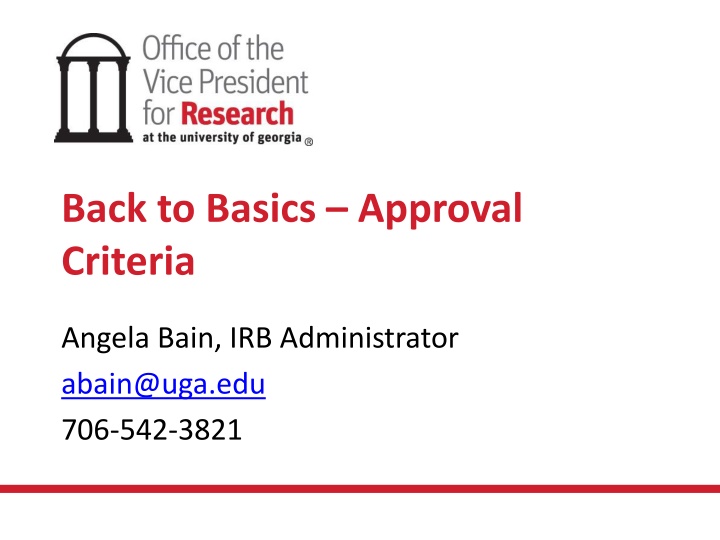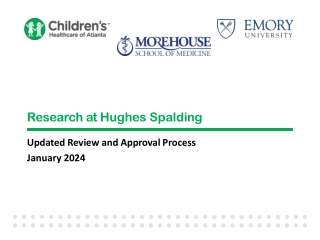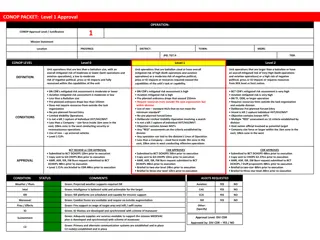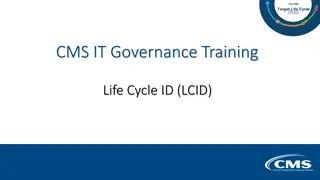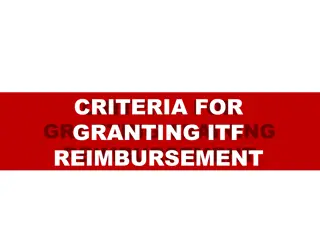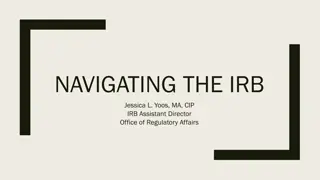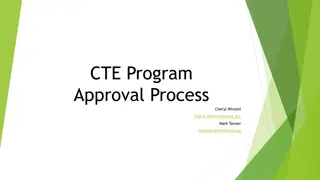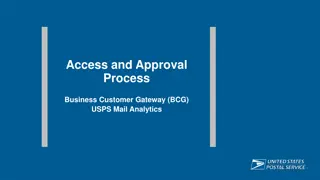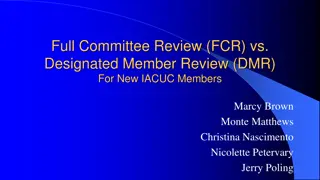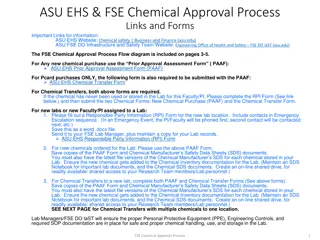Approval Criteria and Review Process
Criteria and review process for approval of research studies, including minimizing risks, ensuring reasonable risk/benefit ratio, equitable subject selection, informed consent, data monitoring, confidentiality, and protecting vulnerable populations. Details on research design, participant criteria, and documentation requirements. Emphasis on qualified investigators, scientific validity, sample size, and control groups.
Download Presentation

Please find below an Image/Link to download the presentation.
The content on the website is provided AS IS for your information and personal use only. It may not be sold, licensed, or shared on other websites without obtaining consent from the author.If you encounter any issues during the download, it is possible that the publisher has removed the file from their server.
You are allowed to download the files provided on this website for personal or commercial use, subject to the condition that they are used lawfully. All files are the property of their respective owners.
The content on the website is provided AS IS for your information and personal use only. It may not be sold, licensed, or shared on other websites without obtaining consent from the author.
E N D
Presentation Transcript
Back to Basics Approval Criteria Angela Bain, IRB Administrator abain@uga.edu 706-542-3821
Criteria for Approval 45 CFR 46.111 25 CFR 56.111 Minimized Risks Reasonable Risk/Benefit Ratio Equitable Subject Selection Informed Consent Process Informed Consent Documentation Data Monitored for Safety Confidentiality/Privacy Maintained Vulnerable Populations Protected
Review Criteria Minimized Risks (1) Risks to subjects are minimized: (i) by using procedures which are consistent with sound research design and which do not unnecessarily expose subjects to risk, and (ii) whenever appropriate, by using procedures already being performed on the subjects for diagnostic or treatment purposes.
Minimizing Risk with Sound Research Design Qualified Investigators Scientific Value Scientific Validity Design Analysis Sample Size Correct Control Group Eligibility Criteria (Inclusion/Exclusion Criteria)
Documentation Where do I find this stuff in the submission? Research Design Page What is the study question? How are investigators seeking to answer the study question? Is this study design likely to answer this study question? Cont
Continued Human Research Participants Page Target Population Sample Size Eligibility Criteria
Review Criteria Reasonable Risk/Benefit Ratio 2) Risks to subjects are reasonable in relation to anticipated benefits, if any, to subjects, and the importance of the knowledge that may reasonably be expected to result. In evaluating risks and benefits, the IRB should consider only those risks and benefits that may result from the research. The IRB should not consider possible long-range effects of applying knowledge gained in the research (for example, the possible effects of the research on public policy) as among those research risks that fall within the purview of its responsibility.
Documentation Where do I find this stuff in the submission? Risks and Benefits page What are the risks? Are risks mitigated by sound research design and/or proper inclusion/exclusion criteria? Are there any benefits to subjects? Society? Consent form Are participants fully informed of potential risks?
Review Criteria Equitable Subject Selection (3) Selection of subjects is equitable. In making this assessment the IRB should take into account the purposes of the research and the setting in which the research will be conducted and should be particularly cognizant of the special problems of research involving vulnerable populations, such as children (Subpart D) prisoners (Subpart C) pregnant women (Subpart B) [handicapped- FDA only] mentally disabled persons economically or educationally disadvantaged persons.
Documentation Where do I find this stuff in the submission? Research participants page Demographics Age ranges Vulnerable Populations page Race/ethnicities Language Exclusion of non-English speaking people? Adequately justified? Research Design page Recruitment process and Consent process
Research Criteria Informed Consent Process (4) Informed consent will be sought from each prospective subject or the subject's legally authorized representative, in accordance with, and to the extent required by 46.116. (we can cover ALL of the requirements of 46.116 next month )
Documentation Where do I find this stuff in the submission? Recruitment Process and Consent Process page Who approaches the potential subjects? When is the subject approached? Coercion vs voluntary? Time to consider participation? Understanding of alternatives? Literacy of subject?
Review Criteria Informed Consent Documentation (5) Informed consent will be appropriately documented, in accordance with, and to the extent required by 46.117.
Review Criteria Data Monitoring for Safety (6) When appropriate, the research plan makes adequate provision for monitoring the data collected to ensure the safety of subjects.
Review Criteria Confidentiality/Privacy Maintained (7) When appropriate, there are adequate provisions to protect the privacy of subjects and to maintain the confidentiality of data
Documentation Where do I find this stuff in the Submission? Privacy and Confidentiality page Consent Form
Review Criteria Vulnerable Populations Protected Additional protections for subjects likely to be vulnerable to coercion or undue influence: Children Prisoners Pregnant Women Mentally Disabled Persons Economically or Educationally disadvantaged persons
Summary These are the criteria on which we base all approvals. If we do not have the information in the submission needed to make these determinations, then we cannot approve. These are also areas where we should, as an IRB, attempt to limit our determinations. Lets not fall in to the tempting areas that lead to mission creep, our job is already challenging enough as it is.
